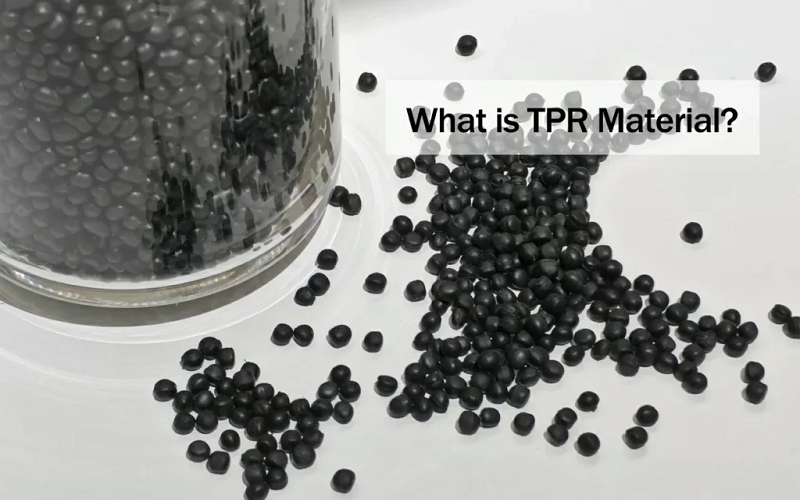Thermoplastic rubber, or TPR, is a material known for its unique blend of rubber-like flexibility and plastic-like moldability. This dual nature makes it a popular choice in various industries, from automotive to consumer goods.
In this article, we’ll break down what TPR is, what material is TPR, its key properties, and how it compares to other materials.
Understanding Thermoplastic Rubber (TPR)
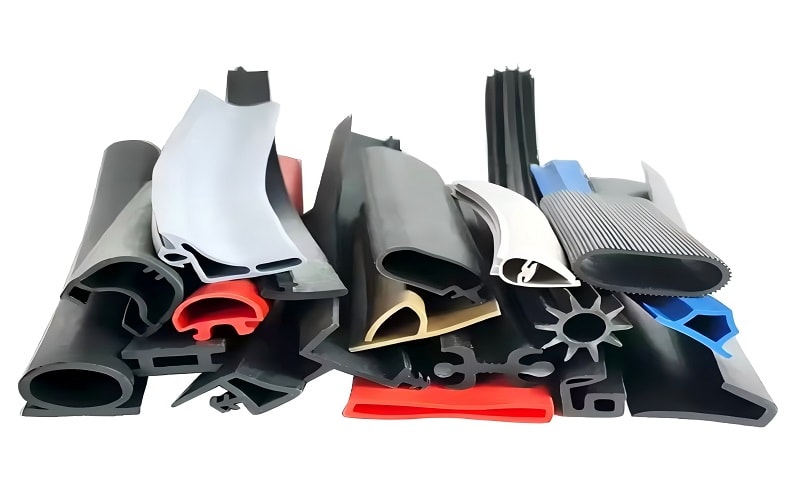
Thermoplastic rubber (TPR) combines rubber-like elasticity with thermoplastic processability, making it a versatile plastic material across industries.
Its synthesis involves styrene-butadiene-styrene (SBS) block copolymers and styrenic block copolymers, forming a semi-crystalline structure with hard styrene and soft butadiene regions, enhancing its mechanical, thermoplastic, and elastomeric properties.
Thermoplastic rubber material, including tpr rubber, benefits from thermoset rubbers and vulcanized rubber for added durability and heat resistance, while polymers like thermoplastic polyurethanes and thermoplastic polyamides are gaining popularity.
Synthetic rubber, including TPR, is widely utilized in these applications. Some rubber smell may be present due to additives, but this makes it ideal for shoe soles, gaskets, and automotive parts in modern manufacturing.
Key Physical Properties of TPR
One of the standout features of thermoplastic rubber is its:
- Exceptional flexibility, making it suitable for a wide range of applications.
- Impressive durability, with excellent fatigue resistance ensuring long-lasting performance even under repeated stress.
- Variable hardness, ranging from 20 Shore 00 to 85 Shore D, offering versatility for application-specific hardness requirements.
Moreover, TPR’s impact resistance and abrasion resistance are noteworthy, allowing it to withstand substantial mechanical stress and impacts.
Physical range and more rubber contribute to its robustness, while better physical range enhances its adaptability.
These physical properties, including flexibility, durability, and impact resistance, along with its performance characteristics, make TPR a go-to material for industries that demand high-performance materials.
Chemical Properties of TPR
Thermoplastic rubber boasts excellent resistance to a wide range of chemicals, making it an ideal choice for diverse applications.
This material, defined by its chemical makeup and base materials, can withstand exposure to dilute acids, alkalis, oils, grease, and hydrocarbons, showcasing its robust chemical resistance.
Reinforcing agents enhance its durability, while TPR also exhibits notable resistance to aliphatic hydrocarbons and alcohols, further enhancing its chemical compatibility, thanks to its thermoplastic and elastic properties.
However, it’s important to note that TPR has moderate resistance to halogenated hydrocarbons and is vulnerable to aromatic hydrocarbons and halogenated solvents.
While TPR’s chemical resistance is impressive, understanding its limitations ensures it is used in the most appropriate environments, maximizing its performance and longevity.
TPR vs. Other Materials
When it comes to material choice, TPR often finds itself compared to other well-known materials like TPE material, PVC, and silicone.
Each of these materials has its unique properties and applications, but TPR’s combination of rubber-like elasticity and thermoplastic processability often gives it a competitive edge, exhibiting similar elastomeric properties.
The following sections will detail these comparisons, showcasing why TPR could be the right material for various projects.
TPR vs. TPE
Comparing thermoplastic rubber (TPR) to thermoplastic elastomers (TPE) reveals several key differences:
- TPR is generally more cost-effective for long-term use due to its greater durability and consistent performance.
- TPR is typically harder and more rigid than TPE, making it less soft but more suitable for industrial applications.
- This rigidity allows TPR to perform better in harsher environments.
- TPE is often preferred for consumer products where softness is a priority.
The chemical structure distinguishes TPR and TPE. TPR is derived from styrene-butadiene-styrene (SBS), while TPE S is based on styrene-ethylene-butylene-styrene (SEBS), leading to differences in properties like smoke emission and end-use applications.
These distinctions make TPR ideal for demanding industrial environments, especially when compared to TPE materials.
Thermoplastic rubber (TPR) is harder and more rigid, making it suitable for industrial use, whereas thermoplastic elastomer (TPE), including TPE A and TPE O variants, is softer and better suited for consumer products. TPE belongs to a broader category with enhanced flexibility.
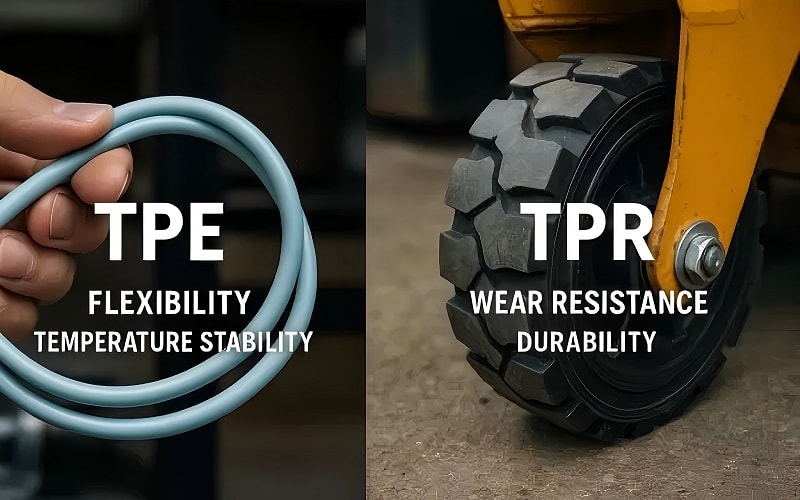
TPR vs. PVC
When comparing TPR to polyvinyl chloride (PVC), several advantages of TPR come to light. While TPR is generally more costly than PVC, it offers significantly better flexibility.
This flexibility makes TPR more adaptable in various applications, from automotive parts to medical devices. Additionally, TPR enhances safety as it does not contain harmful additives that are commonly found in PVC.
TPR also exhibits superior environmental resistance, particularly against UV light and ozone degradation. These properties make TPR a more desirable choice in scenarios where environmental factors are a concern, providing better long-term performance, weather resistance, and safety compared to PVC.
TPR vs. Silicone
Comparing TPR to silicone highlights some key differences in performance. TPR generally offers good temperature resistance but may not reach the high-temperature limits that silicone can withstand.
However, TPR exhibits good load-bearing capabilities, making it suitable for many applications, although it may not match silicone’s superior performance in heavy load situations.
One of the major advantages of TPR over silicone is cost. TPR is generally more cost-effective, making it an attractive choice for budget-conscious applications. These factors make TPR a versatile and economical alternative to silicone in several applications.
Manufacturing Processes for TPR
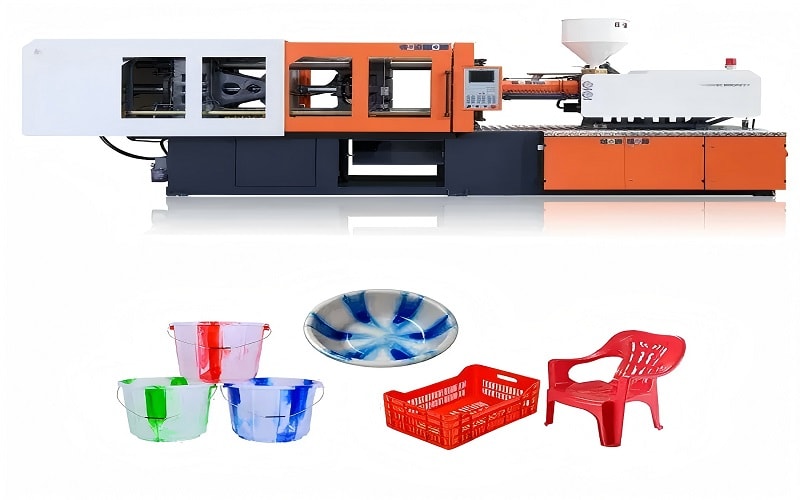
Thermoplastic rubber can be processed using various manufacturing methods, including injection molding, blow molding, and extrusion. These processes leverage TPR’s melt-processing properties, allowing for efficient production of complex shapes while maintaining the original shape.
The use of conventional rubber processing and standard thermoplastic processing equipment facilitates mass production, making TPR a practical choice for large-scale manufacturing across a broad range of applications.
Injection molding is particularly well-suited for TPR due to its rubber-like properties, good mechanical properties, and chemical resistance. Adjusting temperature, pressure, and cooling time during manufacturing allows for precise control over TPR’s physical properties, ensuring the final product meets specific requirements.
Additionally, compression molding and blow molding are used for creating larger or hollow TPR components, respectively.
Typical Applications of TPR
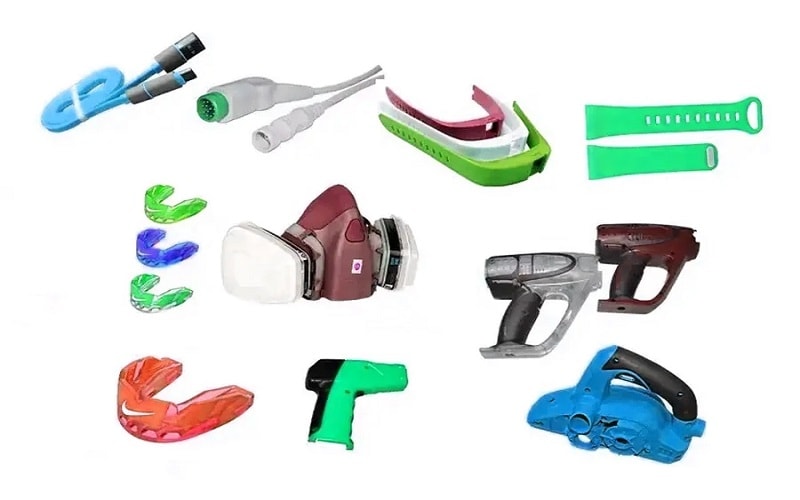
The applications of thermoplastic rubber are vast and varied:
- In the automotive industry, TPR is used for interior parts that require flexibility and impact resistance.
- The healthcare sector employs TPR in medical devices that need to be both safe and flexible.
- Its resilience to extreme weather conditions makes it a popular choice in construction.
Additionally, TPR is favored in the toy industry for its softness and safety. Other common uses include:
- Durable gaskets
- Truck-bed liners
- Footwear All of these take advantage of TPR’s durability and flexibility. With the market for TPR projected to grow significantly, its applications are only set to expand.
Advantages of Using TPR
One of the standout advantages of thermoplastic rubber is its high recyclability, which aligns with environmental sustainability practices.
This material is fully recyclable, contributing to efforts to reduce waste and promote sustainability. TPR also offers exceptional resistance to fatigue, chemicals, and impacts, enhancing its usability in various applications.
The versatility of TPR is another significant advantage. It can be easily processed using injection molding techniques, offering manufacturers a flexible and efficient way to create products.
These benefits, combined with its durability and cost-effectiveness, make TPR an ideal material for numerous industries.
Limitations of TPR
Despite its many advantages, TPR does have some limitations. It maintains its properties across a temperature range from -40 °C to 120 °C, but it is less resistant to high temperatures compared to silicone.
Additionally, TPR has performance issues under continuous exposure to harsh chemicals, limiting its use in certain extreme environments.
Future Trends in TPR Usage
The future of TPR formulations looks promising, with ongoing research and development exploring improved properties and functionalities. Innovative applications, including demanding applications, are emerging in high-tech sectors such as electronics and medical products and medical devices.
Furthermore, sustainability trends are driving the adoption of biodegradable and recyclable TPR materials, ensuring that TPR remains a relevant and valuable material in the years to come.
Summary
In summary, thermoplastic rubber (TPR) is a versatile and valuable material that combines the best properties of both rubber and plastics.
Its unique blend of flexibility, durability, and processability makes it suitable for a wide range of applications, from automotive and healthcare to construction and consumer goods.
The comparisons with TPE, PVC, and silicone highlight TPR’s competitive advantages, while its manufacturing processes and typical applications demonstrate its practicality and versatility.
Looking ahead, the future trends in TPR usage point to ongoing innovation and sustainability, ensuring that TPR remains a key material in various industries.
As research continues and new applications emerge, TPR’s role in modern manufacturing and design is set to grow even more significant.

